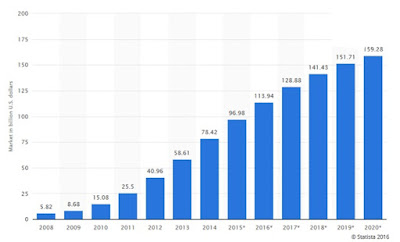Twitter Feed
The Endpoint Imperative: Global Security Compliance. Are you ready?
China has its Cybersecurity Law. Next May, the General Data Protection Regulation – or GDPR –goes into effect for the European Union. Research shows most organizations just aren’t…
The Endpoint Imperative: IT Spending: Setting Priorities in a Volatile World
Fast-evolving trends are changing the way IT thinks about security. To stay secure and productive, IT operations must excel at the fundamentals: PC refreshes for security, and optimizing end-user…
Top 1000 Tech Bloggers
The Rise “Top 1000 Tech Bloggers” leaderboard recognizes the most inspiring Tech journalists and bloggers active on social media. They use Klout scores (50%) and the blogger’s twitter conversations on…
IBM – The Power of Cloud Brokerage
Hybrid cloud adoption is now mainstream and you are making decisions every day about how to transform application and infrastructure architectures, service delivery, DevOps, production operations and governance. With Cloud…
More SMB Love Needed
In a recent post, titled “10 Surprising Facts About Cloud Computing and What It Really Is”, Zac Johnson highlighted some interesting facts about cloud computing in the SMB…
ATMs Are IT Too!
That world of homogenous IT technology managed entirely by the internal IT organization has long disappeared. Operations today require efficient and global management of technologically heterogeneous environments. The challenges and…
Digital Transformation Asset Management
Today’s businesses run in the virtual world. From virtual machines to chatbots to Bitcoin, physical has become last century’s modus operandi. Dealing with this type of change in business even…
The Game of Clouds 2017
The AWS Marketplace is growing at breakneck speed, with 40% more listings than last year! This and more insights were revealed when CloudEndure used their custom tool to quickly scan the…
Managing Your Hybrid Cloud
Photo credit: Shutterstock Runaway cloud computing cost may be causing an information technology industry crisis. Expanding requirements, extended transition schedules and misleading marketplace hype have made “Transformation” a dirty word. …
American Airlines Adopts Public Cloud Computing
Did you know that the reservations systems of the biggest carriers mostly run on a specialized IBM operating system known as Transaction Processing Facility (TPF). Designed by IBM in the…
- Enable cloud service arbitrage based on cost, performance or operational need;
- Help companies migrate operations to the cloud and assist with staff augmentation and training;
- Provide cloud service auditing and SLA monitoring services;
- Help in focusing and managing organizational cloud service demand;
- Provided toolsets to assist in the migration and integration of enterprise applications; and
- Help in change management and the selection and integration of other managed services.
By automating and operationalizing the governance of cloud services, CSBs can efficiently multi-source services and augment them with third party metering and monitoring. Using CSBs, organizations also accelerate their transition to hybrid IT models. This marketplace is typically segmented type of services: cloud brokerage and cloud brokerage enablement, wherein cloud brokerage enablement is further segmented into internal and external brokers. When used internally, cloud enablement platforms helps enterprises adopt the new hybrid IT and multi-sourced operating model. By building organic expertise, companies can personalize IT service consumption and unify
IT service delivery through the use of a corporate self-service store, a dynamic service marketplace, and continuous delivery. This centralized, supply chain approach unifies the order, execution, and management of multi-sourced solutions across legacy and cloud resources, by centrally delegating and tracking execution.
(This post was brought to you by IBM Global Technology Services. For more content like this, visit Point B and Beyond.)
( Thank you. If you enjoyed this article, get free updates by email or RSS – © Copyright Kevin L. Jackson 2016)
Cloud Computing
- CPUcoin Expands CPU/GPU Power Sharing with Cudo Ventures Enterprise Network Partnership
- CPUcoin Expands CPU/GPU Power Sharing with Cudo Ventures Enterprise Network Partnership
- Route1 Announces Q2 2019 Financial Results
- CPUcoin Expands CPU/GPU Power Sharing with Cudo Ventures Enterprise Network Partnership
- ChannelAdvisor to Present at the D.A. Davidson 18th Annual Technology Conference
Cybersecurity
- Route1 Announces Q2 2019 Financial Results
- FIRST US BANCSHARES, INC. DECLARES CASH DIVIDEND
- Business Continuity Management Planning Solution Market is Expected to Grow ~ US$ 1.6 Bn by the end of 2029 - PMR
- Atos delivers Quantum-Learning-as-a-Service to Xofia to enable artificial intelligence solutions
- New Ares IoT Botnet discovered on Android OS based Set-Top Boxes



